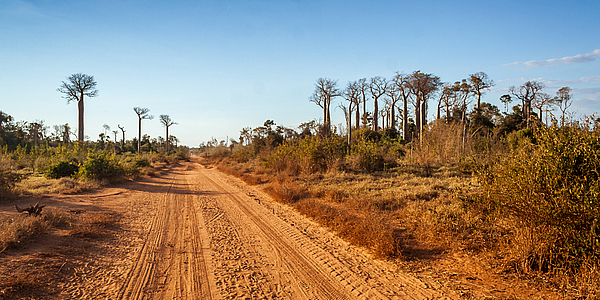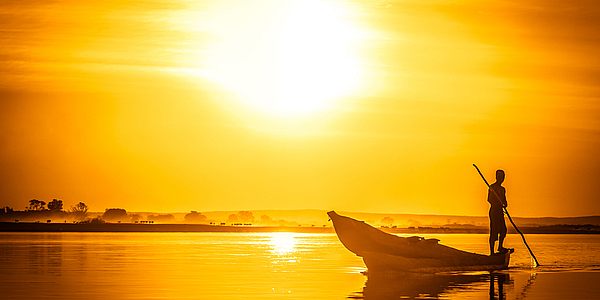


It was never dark at night. I lay awake in the cocoon of my tent on the sand to look at the incandescent half-moon and the overwhelming stars of the southern hemisphere.
I still remember the small hands of the village children picking through my hair, only stopping to dance or to dive into the Tsiribihina, the river which flows through the sand banks and tamarind trees to finally reach the Mozambique channel.
We had four days to discover a different side of part of Madagascar - piroguiers who have barely left their adolescence, boat-buses weighed down with dried fish, and ochre cliffs that cut through the Bemaraha plateau. Sheltered from brush fires, life is easy on the Tsiribihina, and voices echo around, ending up in the papyrus reeds or the little cassava fields.
Among the boat's beams we found some stowaways. A praying mantis, always dignified; and a leaf tailed gecko with its characteristic song.
The evening began on the boat, beached on the sand dunes of a small village that didn't appear on any of our maps. I guessed what we were going to eat. The hen that had been living near the motor had stopped clucking.
The team finally relaxed with a rum arrangé, mixed with lime and ginger. With their lips burning, the boys sat down to sing. Their three voices, sometimes deep, sometimes child like, were beautifully in tune with each other, and in the darkness one of them started to drum on a metal box. They sang about "vazaha", a nickname for white people, about religion, their ancestors, the savings that slide through your fingers between two paddle strokes. Despite the misleading rhythm, the songs became more melancholy, about the vicissitudes of life on the water for people who are always travelling somewhere.
By the light of my torch I treated a wound that one of them had which had become infected after being soaked in the brackish water of the Tsiribihina. But how can you stop a sailor sailing? My plaster would only stick for as long as the next song.

We began the next day at 4.30 a.m. The team was already busy brushing the boat's hull vigorously and everyone in the village had their feet in the Tsiribihina in order to wash themselves or begin their housework. Soap bubbles were floating among the water hyacinth.
A swarm of over excited children took us to visit their village.
When we were brought in by these children who were knee high to a grasshopper their families rushed out of their shacks to see the White People, who were undoubtedly the most exciting attraction that morning. The interest was mutual and, although we had no words, we tried to contact them through shy smiles and deep looks!
In this village of unbaked earth the straw huts looked very frail under their baobab bark roofs. A tame lemur, with red fur and yellow eyes, was begging breakfast from a group of men sitting under a ficus. The animal was jumping from one shoulder to the next, grabbing a bit of rice pancake or dry cake in passing. One of the men called Moona, Mooona and took the lemur back under his arm: reassured by having got back to his master the lemur finished his breakfast by drinking a little coffee from a metal cup. Moona fell asleep and we left the village on tip toe.
